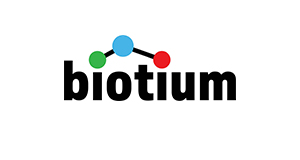S100B (Astrocyte and Melanoma Marker) (SH-B1), CF740 conjugate, 0.1mg/mL
S100B (Astrocyte and Melanoma Marker) (SH-B1), CF740 conjugate, 0.1mg/mL
Artikelnummer
BTMBNC741749-500
Verpackungseinheit
500 uL
Hersteller
Biotium
Verfügbarkeit:
wird geladen...
Preis wird geladen...
Description: S100A and S100B proteins are two members of the S100 family of calcium binding proteins. S100A is composed of an alpha and a beta chain whereas S100B is composed of two beta chains. This antibody is specific against an epitope located on the beta-chain (i.e. in S-100A and S-100B) but not on the alpha-chain of S-100 (i.e. in S-100A and S100A0). This antibody can be used to localize S-100A and S-100B in various tissue sections. S-100 protein has been found in normal melanocytes, Langerhans cells, histiocytes, chondrocytes, lipocytes, skeletal and cardiac muscle, Schwann cells, epithelial and myoepithelial cells of the breast, salivary and sweat glands, as well as in glial cells. Neoplasms derived from these cells also express S-100 protein, albeit non-uniformly. A large number of well-differentiated tumors of the salivary gland, adipose and cartilaginous tissue, and Schwann cell-derived tumors express S-100 protein. Almost all malignant melanomas and cases of histiocytosis X are positive for S-100 protein.Primary antibodies are available purified, or with a selection of fluorescent CF® Dyes and other labels. CF® Dyes offer exceptional brightness and photostability. Note: Conjugates of blue fluorescent dyes like CF®405S and CF®405M are not recommended for detecting low abundance targets, because blue dyes have lower fluorescence and can give higher non-specific background than other dye colors.
Product origin: Animal - Mus musculus (mouse), Bos taurus (bovine)
Conjugate: CF740
Concentration: 0.1 mg/mL
Storage buffer: PBS, 0.1% rBSA, 0.05% azide
Clone: SH-B1
Immunogen: Purified bovine brain S100 protein
Antibody Reactivity: S100B
Entrez Gene ID: 6285
Antibody Application Notes: For coating for ELISA, order Ab without BSA/Higher concentration may be required for direct detection using primary antibody conjugates than for indirect detection with secondary antibody/Optimal dilution and staining procedure for a specific application should be determined by user/Recommended starting concentrations for titration are 1-2 ug/mL for most applications, or 1 ug/million cells/100 uL for flow cytometry
Product origin: Animal - Mus musculus (mouse), Bos taurus (bovine)
Conjugate: CF740
Concentration: 0.1 mg/mL
Storage buffer: PBS, 0.1% rBSA, 0.05% azide
Clone: SH-B1
Immunogen: Purified bovine brain S100 protein
Antibody Reactivity: S100B
Entrez Gene ID: 6285
Antibody Application Notes: For coating for ELISA, order Ab without BSA/Higher concentration may be required for direct detection using primary antibody conjugates than for indirect detection with secondary antibody/Optimal dilution and staining procedure for a specific application should be determined by user/Recommended starting concentrations for titration are 1-2 ug/mL for most applications, or 1 ug/million cells/100 uL for flow cytometry
| Artikelnummer | BTMBNC741749-500 |
|---|---|
| Hersteller | Biotium |
| Hersteller Artikelnummer | BNC741749-500 |
| Verpackungseinheit | 500 uL |
| Mengeneinheit | STK |
| Reaktivität | Human, Rat (Rattus), Rabbit, Cat (Feline), Cow (Bovine) |
| Klonalität | Monoclonal |
| Isotyp | IgG1 kappa |
| Wirt | Mouse |
| Konjugat | Conjugated, CF740 |
| Produktinformation (PDF) | Download |
| MSDS (PDF) | Download |

 English
English







